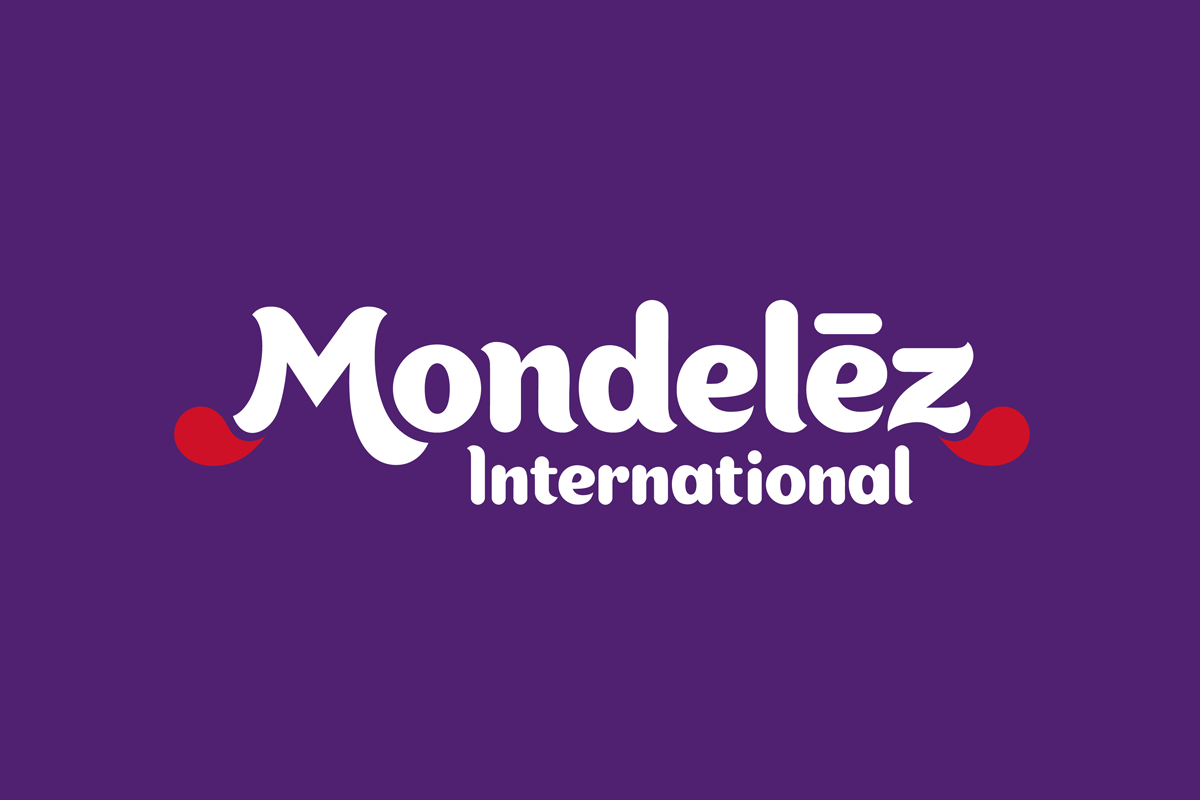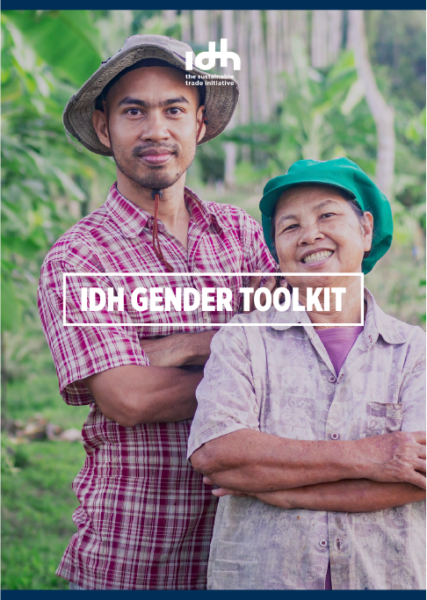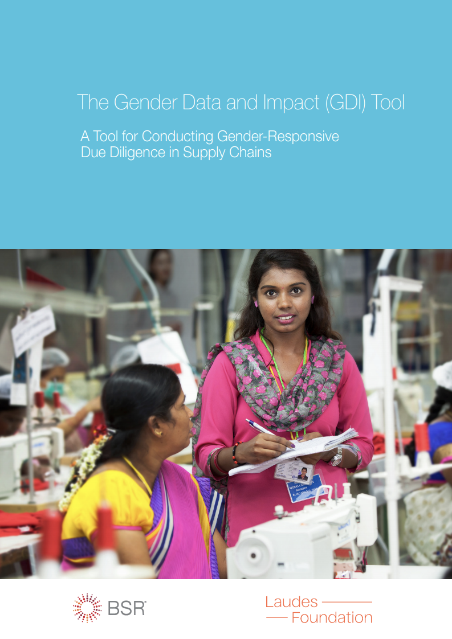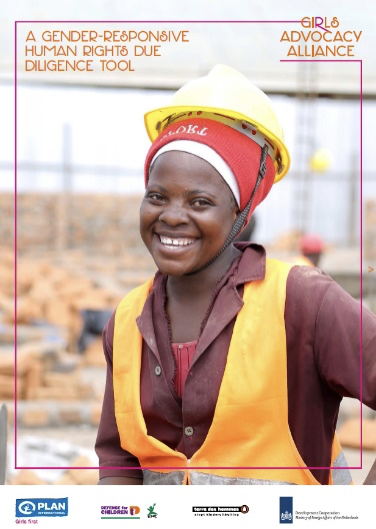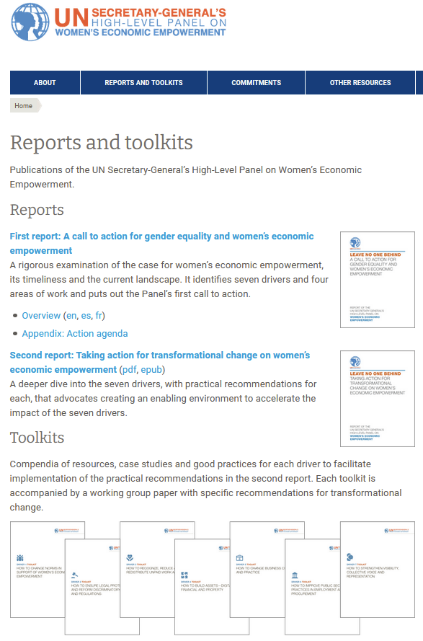At this stage, companies have undertaken a thorough assessment of the human and labour rights risks and environmental risks, as well as specific gender risks to which their activities contribute or could contribute and their (potential) adverse impacts. The next step is to take action to prevent any further negative impacts on stakeholders and to mitigate risks for the future.
Risk mitigation means taking proactive and reactive actions that help reduce the identified risks. Taking effective action might require budget allocation as well as adjustments in operational and decision-making processes. Appropriate action can take the form of preventing or mitigating actions (e.g. by providing training for suppliers) or – if no other options are available – stopping activities altogether. Risk mitigation should not be confused with remediation of actual adverse impacts as this is included in Step 6.
Risks identified in the scoping assessment could include labour and human rights, environmental and gender-specific risks. In Step 3 it is important to:
- Consider the impact of your actions on all workers when determining and implementing appropriate action tackling human rights, labour rights and environmental risks.
- Address gender-specific risks.
When determining appropriate action, it is important to address both the immediate effects of adverse impacts as well as its root causes. This helps to ensure that your actions are effective in the long-term and that short-term action does not accidentally exacerbate or aggravate existing gender inequalities. For example, women are responsible for most of the food production consumed in developing countries, yet agricultural land is still often owned by their male relatives. Therefore they are often overlooked when access to land is being negotiated prior to extractive or infrastructure projects, which means they lose out on compensation. This results in adverse impacts, not only for the women themselves, but also for their children and communities.
The level of involvement of a company influences the type of action that can be implemented to address an adverse impact. The diagram below gives a high level overview of this.

CREDIT: OECD DUE DILIGENCE GUIDANCE FOR RESPONSIBLE BUSINESS CONDUCT
1. Stop company activities that are causing or contributing to adverse impacts on human rights issues and develop and implement plans to prevent and mitigate potential adverse impacts.
When a company is causing or contributing to adverse impacts through its own business activities, it has several options:
- Remedy an actual impact
- Eg. When a company comes to the conclusion that it has a gender pay gap, it can compensate women for lost income and ensure that moving forward women earn the same as men for the same work.
- Prevent a potential impact
- Eg. A company with many employees who are young women or mothers needs to ensure that it retains these employees after child birth. It grants extensive parental leave and introduces a workplace nursery which mitigates the disproportionate loss of women employees due to childcare.
- Cease an activity with an adverse impact or that contributes to one
- Eg. a company can decide to stop using environmentally unfriendly materials in its production process to cease its contribution to pollution.
- Use its leverage to help mitigate adverse impacts
- Eg. a company lobbies with its peers to jointly sign an agreement that bans plastic packaging.
When determining an appropriate response, a company should investigate the root causes of adverse impacts. The following example shows why this is important.
As a result of the scoping exercise that a company executed in Step 2, it found some cases of sexual harassment in the workplace. Its findings suggest that a certain team manager behaves indecently towards women employees. This is confirmed when the company dives deeper into the cases, and given the severity of the cases, the company decides to dismiss the manager. The company considers this adverse risk mitigated and continues to focus on other risks that were raised through their due diligence assessment.
As a result of the scoping exercise that a company executed in Step 2, it found some cases of sexual harassment in the workplace. Its findings suggest that a certain team manager behaves indecently towards his women employees. This is confirmed when the company dives deeper into the cases, and given the severity of the cases, the company decides to dismiss the manager. Additionally, the company investigates why these cases were not brought up through their regular grievance mechanism. It commissions an external agency to research how employees perceive their work, their managers, and the company culture. The company also investigates all of the managers’ knowledge of and attitude towards sexual harassment. It concludes that managers lack knowledge on what is appropriate behaviour, and that women employees fear retaliation when reporting cases through the current grievance mechanism. In response to these findings, the company starts a widespread internal campaign on sexual harassment and requires all managers to follow training on gender-based violence. Furthermore, improvements are made to the grievance mechanism, including appointing a trusted third party that ensures anonymous complaints and confidentiality, while also enabling a channel for communication with the complainant.
2. Develop and implement plans to seek to prevent or mitigate actual or potential adverse impacts on human rights issues which are directly linked to the company’s operations, products or services by business relationships.
When adverse impacts are directly linked to the activities of business partners, a company should use leverage to influence the entity causing the adverse impact to prevent or mitigate the impact. The following examples illustrate the difference that applying a gender lens makes when determining appropriate action to address risks discovered in different supply chains.
A multinational chocolate manufacturer has identified an environmental risk through its scoping exercise in Step 2. It found that cocoa farms in its supply chain are not always using good agricultural practices like terracing and mulching, pruning and using shade from other crops to avoid soil erosion. This could eventually lead to further deforestation when farmers decide to move to other plots.
The company decides to implement Good Agricultural Practices (GAP) training for the farmers in its supply chain. Through GAP training, cocoa farmers learn how to take care of their plots in a sustainable manner, and how to farm efficiently and in an environmentally-friendly and community-friendly way. Since the trainings cannot be offered to all farmers at the same time, the company decides to prioritise farmers with a certain land size. Furthermore, the company is initially looking to reach farmers that have the ability to purchase inputs, so they can implement the lessons learned themselves. The selected GAP training also requires a certain level of literacy. The trainings are scheduled to happen during the early morning to accommodate the farming schedules for the day.
A multinational chocolate manufacturer has identified an environmental risk through its scoping exercise in Step 2. It found that cocoa farms in its supply chain are not always using good agricultural practices like terracing and mulching, pruning and using shade from other crops to avoid soil erosion. This could eventually lead to further deforestation, when farmers decide to move to other plots.
The company decides to implement Good Agricultural Practices (GAP) training for the farmers in its supply chain. Before implementing the trainings, the company investigates further by applying a gender lens to cocoa farming. They find that while women have an important role in the growing and harvesting of cocoa, they have had unequal access to trainings. Requirements that are set for participants, like minimum land size and literacy levels, often unintentionally exclude women. Furthermore, women are often not available to attend early morning sessions because of their high domestic workload. Therefore, women suffer serious disadvantages in accessing traditionally delivered extension services and training.
To ensure all farmers are reached by the company’s GAP training, the farmers themselves are included in the scheduling process of the trainings, ensuring they take place at a time that suits everyone. Additionally, women-only trainings are developed with meeting schedules more adapted to the realities of women farmers’ lives, and with materials that are created for all literacy levels.
While it is likely that the scoping exercise executed in Step 2 will result in identifying a number of human rights risks to which adding a gender lens may alter or refine the action taken to mitigate adverse impacts, it may also be necessary to do deeper investigation to understand and manage the gender-related risks, as the following case illustrates.
A clothing brand procures its ready-made garments from factories in several countries in Asia. With customers continuously expecting new and cheap clothing items, the company is required to operate at high speeds and to demand quick, flexible and cheap production from its suppliers in order to keep up. During the scoping assessment it executed in Step 2, the company finds that it is running the risk of unauthorised subcontracting by the factories in its supply chain. In order to meet tight deadlines and to be able to complete unanticipated orders, manufacturers feel the need to subcontract certain production processes to other factories and workplaces, without informing the clothing brand. The subcontracted factories and workplaces are not formally part of the buyer’s supply chain and thus corporate social compliance audits do not take place there. Such workplaces may be unregistered, informal enterprises where no taxes are paid, and where governmental labour inspections do not take place at all. Workers in these informal workplaces face particularly high risks to their human and labour rights, often having to accept low wages, unsafe working conditions, and other disadvantages.
To tackle this risk, the company includes a clause in their contracts and social audits with suppliers that requires them to hire workers through formal contracts. They reinforce this clause in conversations with suppliers, to explain the reasons and to ensure compliance. Furthermore the company works with their suppliers to come up with other solutions for flexibility in their procurement contracts.
A clothing brand procures its ready-made garments from factories in several countries in Asia. With customers continuously expecting new and cheap clothing items, the company is required to operate at high speeds and to demand quick, flexible and cheap production from its suppliers in order to keep up. During the scoping assessment it executed in Step 2, the company finds that they are running the risk of unauthorised subcontracting by the factories in its supply chain. In order to determine appropriate action to mitigate the labour and human rights risks that are associated with informal work, the company commissions additional research. They find that in South Asia, over 80 per cent of women in non-agricultural jobs are in informal employment. This is important to realise when designing and implementing mitigating action to address informal work. The lack of social protections in the informal sector has long-term impacts on women. For example, fewer women receive pensions globally, and as a result, more elderly women are now living in poverty.
The company realises that eliminating informal work from a company’s supply chain is not necessarily the best solution for these informal workers, and will disproportionately affect women. This may result in excluding these workers altogether, leaving them without income and social protection. Therefore, the company opts to engage with their suppliers and the informal sector, designing a multi-pronged approach that promotes the formalisation of informal workers alongside skills upgrading, access to social services, and social dialogue.
Whether the company is taking action itself or is leveraging its partners to address adverse impacts, it is important to investigate the gendered effects of those impacts in deciding on the appropriate mitigating actions. In Step 4, we explore the importance of assessing the impact of the mitigation actions on an ongoing basis to ensure they have the intended effects, without unintended negative consequences.
